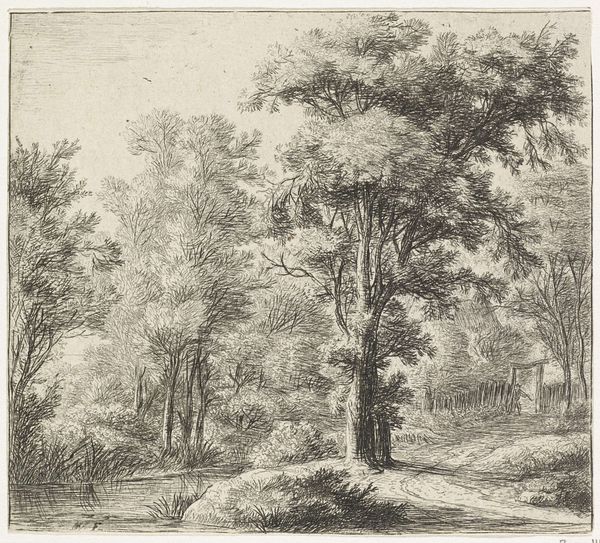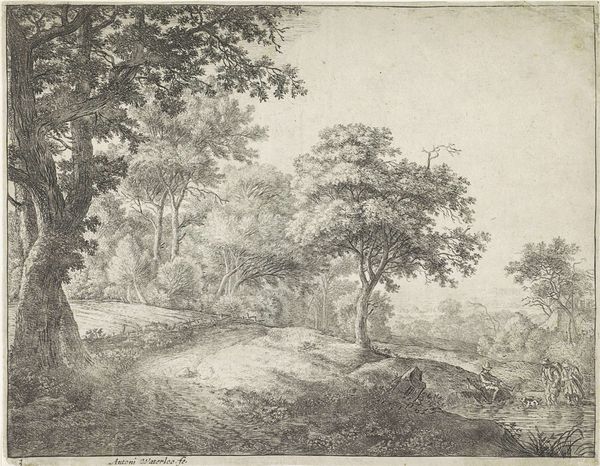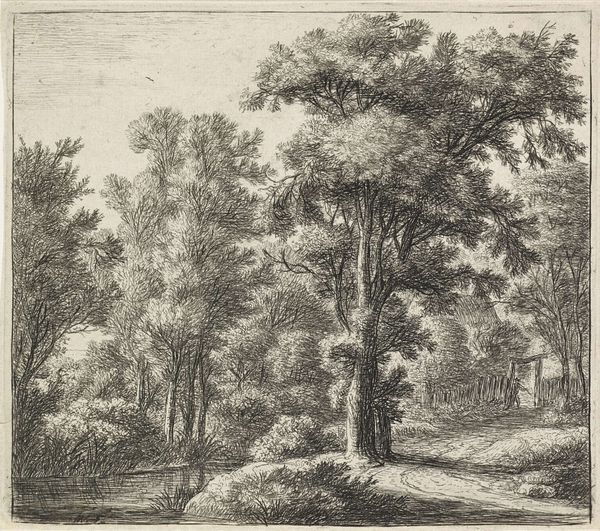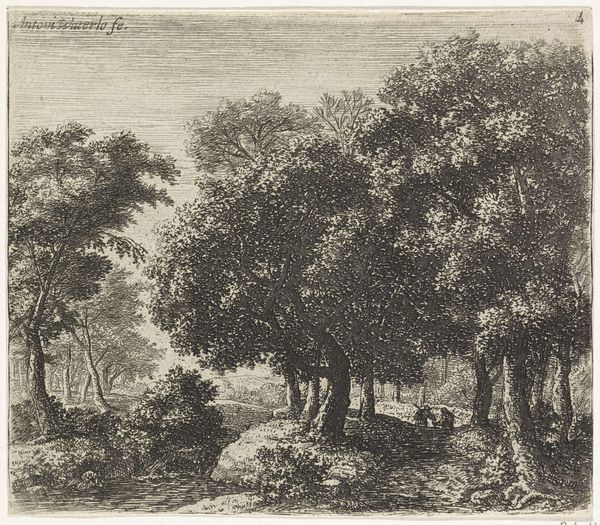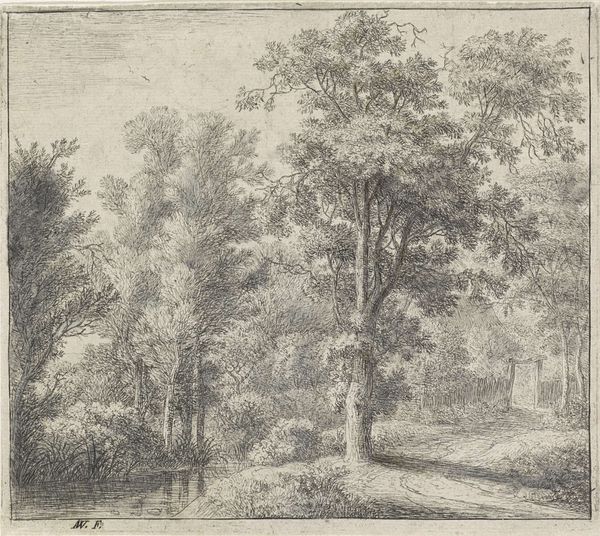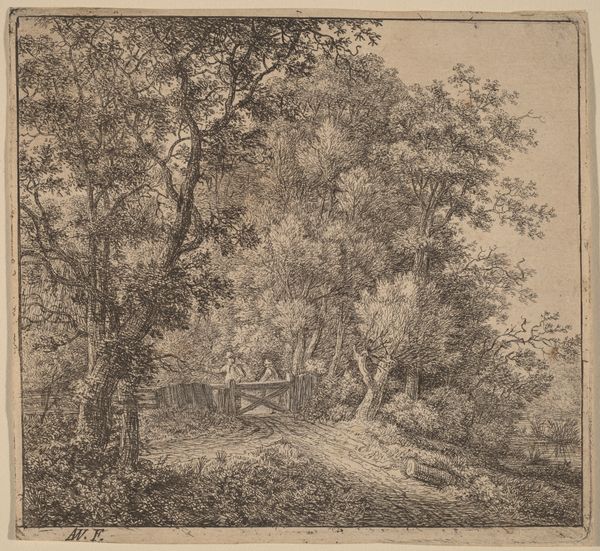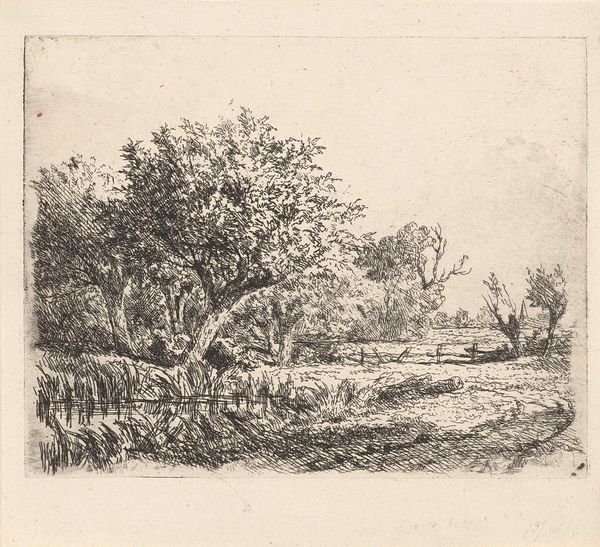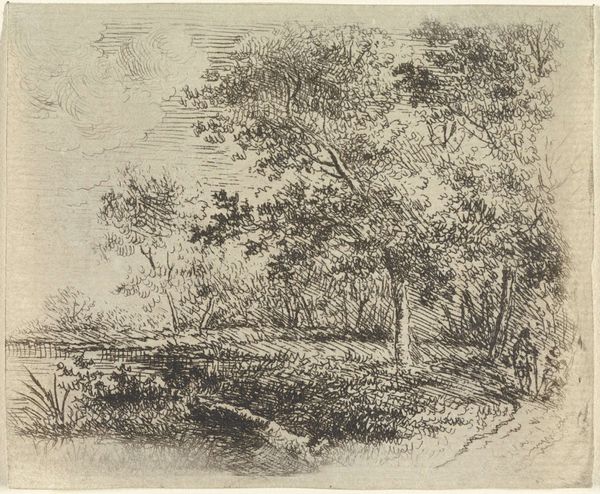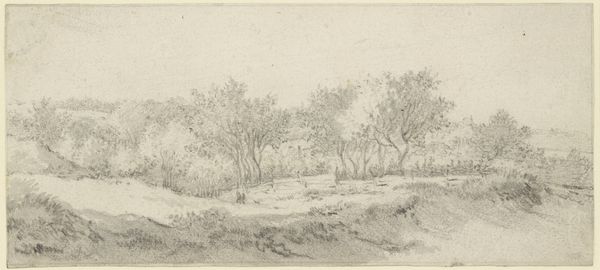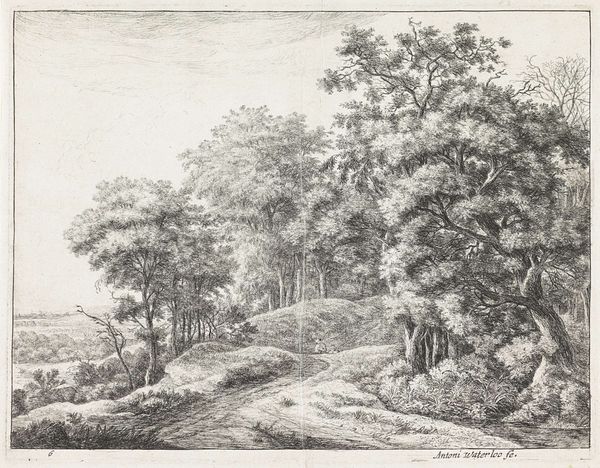
print, engraving
#
dutch-golden-age
# print
#
landscape
#
figuration
#
line
#
engraving
Dimensions: height 125 mm, width 140 mm
Copyright: Rijks Museum: Open Domain
Curator: Here at the Rijksmuseum, we have a print by Anthonie Waterloo titled “Two Figures by a Gate,” created sometime between 1630 and 1675. Editor: My first impression is one of serenity. It's a peaceful landscape; the dense trees framing the gate and the figures create an inviting, almost dreamlike space. Curator: It is a rather typical Dutch Golden Age landscape, rendered as an engraving. Notice how Waterloo uses line to create texture and depth, particularly in the foliage. The seemingly random placing of line gives a wildness to this idyllic scene. Editor: Yes, and I am drawn to the figures themselves. Their placement at the gate positions them at a threshold, almost symbolic. Are they entering, or are they leaving? Who were the audiences of images like these? And, did those viewers interpret a power dynamic by seeing figures stopped at a gate? Curator: Such landscapes were highly popular during this era, reflecting a growing sense of national identity and pride in the Dutch countryside, they really showcased Dutch landscapes. They became symbols of home in an increasingly mobile society, where many sought trade in far off regions. I doubt, however, that the placement of two figures at a fence denotes something so deliberate, like a power dynamic. Editor: Perhaps. Yet, it's important to consider the social implications of such seemingly benign scenes. Art often subtly reflects and reinforces the status quo. In the same way now, art that sells helps reproduce the systems from which it came. It seems important to interpret it through an intersectional lens of identity, class, and perhaps, even a national identity that was in formation. Curator: The popularity of landscapes speaks to the burgeoning art market of the time, catering to the tastes of a middle class eager to display their wealth and patriotism, both hallmarks of the Dutch Golden Age. These prints made art accessible, reproducible, and easily circulated as well as a representation of an aspirational lifestyle. Editor: Thinking about its afterlife then makes me see these prints circulating beyond national boundaries. What did landscapes of Holland mean outside the Dutch context? Maybe these images served to construct and spread the ideology and fantasies around life in this nation. Curator: The Dutch Golden Age certainly provides rich material for artistic and historical interpretation, in this single, simply rendered landscape we have windows into both its own moment and its continued influence. Editor: Precisely. It reminds us how even the most seemingly straightforward images are layered with historical and social complexities.
Comments
No comments
Be the first to comment and join the conversation on the ultimate creative platform.
